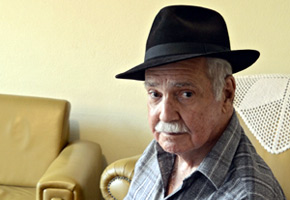

The zoologist and composer participated in the movement of professors and researchers that proposed the creation of FAPESP
The zoologist and composer participated in the movement of professors and researchers that proposed the creation of FAPESP.
The zoologist and composer participated in the movement of professors and researchers that proposed the creation of FAPESP.

The zoologist and composer participated in the movement of professors and researchers that proposed the creation of FAPESP
By Claudia Izique
Agência FAPESP – “When God made me a zoologist, he knew what he was doing,” was a comment frequently heard from Paulo Emílio Vanzolini, who died on April 28 at age 89 after succumbing to pneumonia. With a medical degree from Universidade de São Paulo (USP) in 1947 – just to get to know vertebrates better, he stressed – he directed USP’s Museum of Zoology for 31 years and was responsible for forming the exceptional collection of species — “one of the best in the world,” he boasted.
Part of this collection was gathered by Vanzolini himself along the 11,000 kilometers of the Amazon River in a research expedition funded by FAPESP. “I walked through the forest and bought animals: five hundred for a lizard, five thousand for a snake,” he explained in his deposition at the People Museum, published in November 2011. For 40 years, he looked for reptiles and amphibians all over Brazil.
In 2010, 47 of his more than 150 scientific articles were collected in a FAPESP-funded book Evolução ao Nível de Espécie: Répteis da América do Sul (Evolution at the Species Level: Reptiles of South America) organized by Andrea Bartorelli, Murilo de Andrade Lima Lisboa, Virginio Mantesso-Neto and Dione Seripierri.
His connection with FAPESP was long-standing. “Vanzolini participated in the movement of professors and researchers that proposed the creation of FAPESP, and in the Carvalho Pinto administration he made a fundamental contribution to structuring the institution and conceiving the model of organization that has been employed in the Foundation ever since,” affirms Celso Lafer, president of FAPESP. “I deeply regret his death. Vanzolini was someone for whom I had great admiration.”
As scientific aide to the Secretary of Agriculture, Vanzolini was part of the group that in 1959 met with the then vice-cabinet chief, Plínio de Arruda Sampaio, who was responsible for the Government Action Plan that drafted the pre-project for the creation of FAPESP.
“Carvalho Pinto asked me to study the matter, I went to the United States, talked to people at the Guggenheim and Ford Foundations. I had valuable conversations with Henri Allen Moe, secretary of the Guggenheim. This idea of debureaucratizing FAPESP came from there. I wrote the bill that passed in the State Assembly,” explained Vanzolini in a 2002 interview with Pesquisa FAPESP magazine in June 2002.
“On the financial resources issue, we did something that was the focus of much criticism. I did what the Foundation should do: FAPESP should invest. Moreover, it has a legal obligation to invest a part of its budget to guarantee assets,” he affirmed in an interview published in the book FAPESP 40 Anos – Abrindo fronteiras (FAPESP 40 Years – Opening Frontiers), organized by Amélia Império Hamburguer, released by Edusp/FAPESP.
Vanzolini was a member of the Foundation’s first Board of Trustees and served for three periods: 1961–1967, 1977–1979 and 1986–1993.
The scientist and researcher was also one of the major names in the São Paulo samba world and a composer of classic tunes, including Ronda, Praça Clóvis and Volta por Cima. While still in Medical School, he joined the musical caravans of the Centro Onze de Agosto at the Law School, participating in shows in inland São Paulo. But his passion for music truly developed at the end of 1948 and early 1949 in Boston when he was doing his doctorate at Harvard University.
“The first time I entered a jazz bar, I almost passed out,” he recalled in his deposition for the People Museum. The first music he recorded was Ronda, which was tucked away on the B side of Moda da Pinga, with Inezita Barroso, which only became a success later when sung by Márcia. He made money with Volta por Cima. “I bought books. I bought an entire library of old books,” he said. “I bought them and did not even ask the price. I bought them in dollars.”
Vanzolini was a member of the Brazilian Academy of Sciences (ABC), received the Grand Cross of the National Order of Scientific Merit, was recognized by the Guggenheim Foundation in New York for his contribution to the progress of science and won the 2011 Conrado Wessel Prize.
He was also honored as the namesake of at least 15 taxa of insects, amphibians, reptiles, arachnids and even a mammal — Alpaida vanzolinii (1988), Vanzosaura ( 1991) and Anolis vanzolinii (1996), among others. He was buried on April 29, 2012 at the Cemitério da Consolação in São Paulo.
Republish
The Agency FAPESP licenses news via Creative Commons (CC-BY-NC-ND) so that they can be republished free of charge and in a simple way by other digital or printed vehicles. Agência FAPESP must be credited as the source of the content being republished and the name of the reporter (if any) must be attributed. Using the HMTL button below allows compliance with these rules, detailed in Digital Republishing Policy FAPESP.





